Hello poultry farmers, are you planning to start small-scale or large commercial or backyard/free-range chicken farming in Indonesia? Then this is the right article to look for. Indonesia is a tropical country located in Southeast Asia with a population of over 280 million people. The climate is perfect for chicken farming, and the country has an excellent demand for chicken meat.
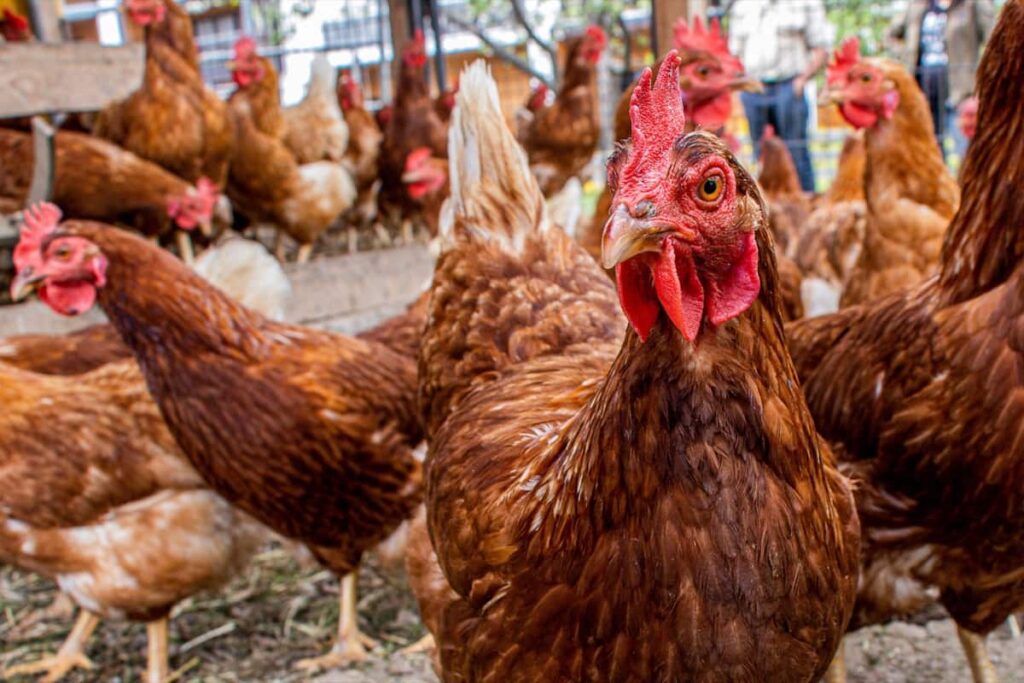
Chicken farming is a relatively new industry in Indonesia. However, there are many opportunities for those interested in starting a chicken farming business in Indonesia. The market is growing rapidly, and there is a high demand for chicken meat. The government also supports the industry, providing subsidies and other incentives to farmers. In this blog post, we will cover commercial chicken farming along with other requirements.
Chicken farming in Indonesia
Indonesia poultry industry outlook
The poultry industry in Indonesia is forecast to produce at a CAGR (compound annual growth rate) of around 9% during the 2016-2020 period. Rising disposable incomes and the growing popularity of chicken as a protein source will drive the poultry industry’s growth. The Indonesian poultry industry is dominated by broiler chickens, which account for over 90% of total production.
Poultry production is concentrated in Java, Sumatra, Sulawesi, and Kalimantan. The top three producers are Japfa Comfeed Indonesia, Charoen Pokphand Indonesia, and PT Indofood CBP Sukses Makmur Tbk – which account for around 60% of total broiler chicken production. Most chicken meat is consumed fresh, although there is a growing market for processed chicken products such as nuggets and sausages.
Chicken is typically sold through informal channels such as traditional markets and street vendors. However, modern retail outlets such as supermarkets are also gaining ground, particularly in urban areas. The avian influenza outbreak in 2015 led to a sharp decline in poultry production and exports. However, the industry has since recovered and is expected to return to growth in the coming years.
Chicken Breeds Originating in Indonesia
| Ayam Cemani | Ayam Pelung |
| Ayam Kampong | Bekisar |
| Ayam Kedu | Sentul chicken |
| Ayam Ketawa | Sumatra chicken |
Poultry/Chicken Farming Business Plan in Indonesia
Every business without a proper plan will not be successful. Therefore, the Indonesian chicken farming business plan should include the following:
- An overview of the chicken farming industry in Indonesia. This should include information on the current size and growth of the industry, as well as the main players in the market.
- An analysis of the Indonesian chicken farming market. This should include an assessment of the demand for chicken meat and eggs and an analysis of the main competitors in the market.
- A marketing plan for a chicken farming business in Indonesia. This should include an analysis of the target market and a marketing strategy and budget.
- A financial plan for a chicken farming business in Indonesia. This should include estimated start-up costs and a forecast of revenues and expenses for the first few years of operation.
- An operational plan for a chicken farming business in Indonesia. This should include information on the required infrastructure, staff, equipment, and a detailed production schedule.
In case you missed it: Ayam Cemani Chicken Breed Guide: Characteristics, Cost, Egg Laying, Care,
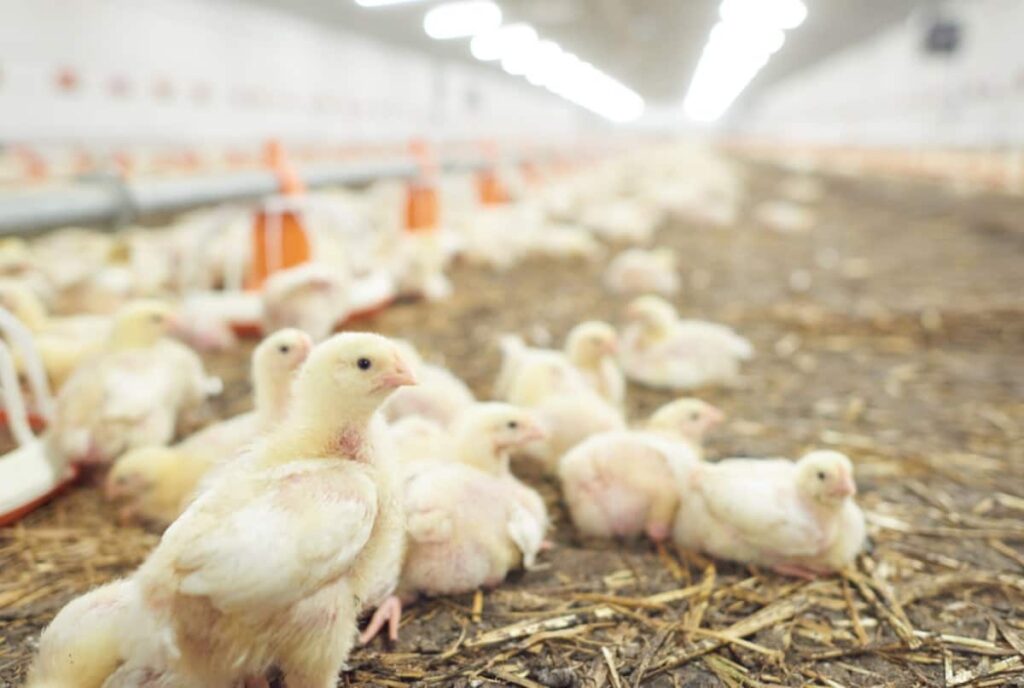
License/permits required to start commercial poultry/chicken farming in Indonesia
Individuals who want to engage in commercial chicken farming in Indonesia must obtain a license from the Ministry of Agriculture. The application process for a license is as follows:
- Individuals must submit an application to the Ministry of Agriculture along with the required documents.
- The Ministry of Agriculture will review the application and supporting documents.
- If the application is complete and meets the requirements, the Ministry of Agriculture will issue a license to the applicant.
- The license must be renewed every five years.
Documents that must be submitted along with the application
- A copy of an ID card (KTP) or passport for foreign nationals
- A copy of the business registration certificate (TDP)
- A copy of the incorporation certificate (if applicable)
- A copy of SIUP (Surat Izin Usaha Perdagangan/Business License)
- A copy of NPWP (Nomor Pokok Wajib Pajak/Taxpayer Registration Number)
- A statement letter from the village head or sub-district head certifying that the applicant has permission to build a chicken farm in their area
- An environmental impact assessment report (if required by law)
Requirements to start commercial chicken farming in Indonesia
Starting a commercial chicken farm in Indonesia is an excellent method to get involved in the country’s rapidly growing poultry industry. However, some important requirements must be met to be successful. First and foremost, you will need to obtain a business license from the Indonesian government. This can be done by applying to the Ministry of Agriculture. Once you have your business license, you must find suitable land to build your farm. The farm size will depend on the chickens you plan to raise.
Next, you will need to construct chicken coops and other necessary buildings. It is important to ensure that these structures meet all required safety and health standards. Once the farm is up and running, you must procure chicks from a reputable hatchery. These chicks must be vaccinated before they are brought to your farm. Raising chickens can be a very rewarding experience, but remember that it is also a business. As such, you must keep meticulous records and follow all relevant regulations to succeed.
In case you missed it: Understanding Backyard Poultry/Chicken Farming at Home: Check How this Guide Helps Beginners
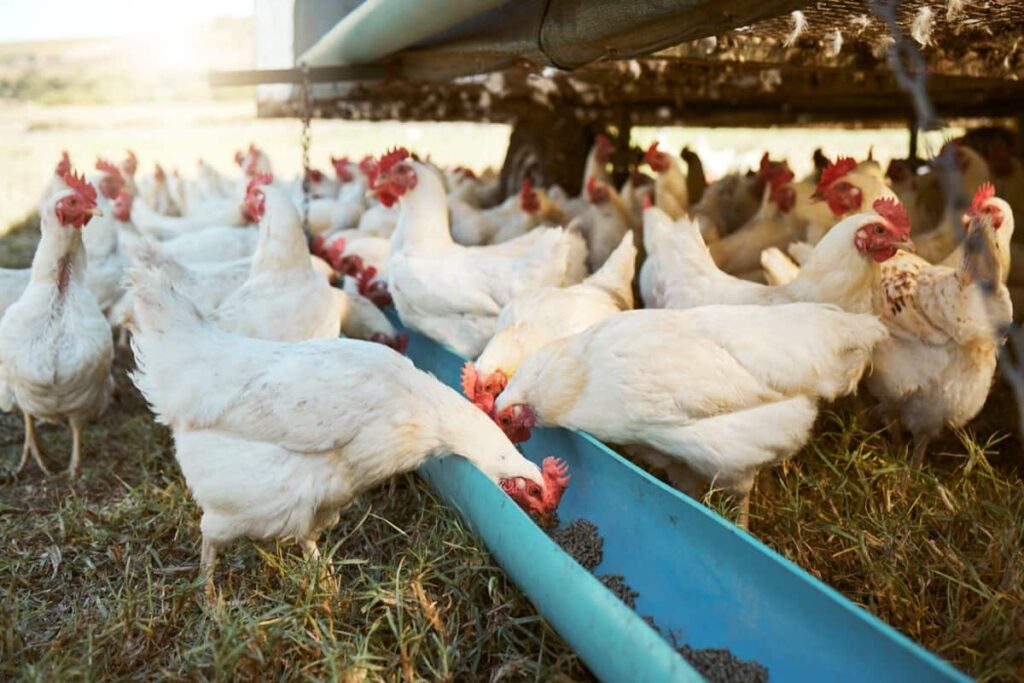
Cost to start chicken farming in Indonesia
The cost of chicken farming in Indonesia can vary depending on the operation size and scope. For a small farm with a few hundred chickens, the initial investment may be as low as $500. For a large commercial operation, the cost could be closer to $100,000. In terms of ongoing costs, chicken feed is the biggest expense. A 50-kilogram bag of chicken feed typically costs around $15.
Other significant costs include vaccines, electricity, and labor. Assuming a moderate-sized farm with 1,000 chickens, the total monthly cost of chicken farming in Indonesia would be around $1,500. This cost does not include the cost of land or buildings, which can vary considerably depending on the location. However, these numbers are not fixed and may change yearly and from location to location.
Steps to start chicken farming in Indonesia
- Do your local market research: Before starting chicken farming in Indonesia, it’s important to research and understand the local market. What type of chickens is in demand? What are the local regulations around chicken farming?
- Find a good location: The location of your chicken farm will play a big role in its success. Look for a place with good access to water and land for pasture.
- Build or buy a chicken coop: Your chicken coop will need to be big enough to comfortably house your chickens and protect them from the elements and predators.
- Buy your chickens: Once you’ve built your chicken coop, it’s time to buy them! Choose healthy birds from a reputable supplier.
- Raise your chickens: Take care of them and provide them with plenty of food and water. Keep an eye out for illness signs and consult a vet if necessary.
- Collect eggs: Your chickens will start laying eggs after a few months. Collect them daily and keep them clean.
- Sell your eggs: You can sell your eggs to local shops or customers directly from your farm.
- Butcher your chickens: When they reach maturity, you can butcher them for meat or sell them live to customers.
- Manage waste: Chicken waste can be used as fertilizer for your plants or sold as compost. However, proper management of chicken waste is advised.
- Enjoy knowing that you are producing healthy food for yourself and others.
In case you missed it: Common Country Chicken Diseases: Symptoms and Treatment
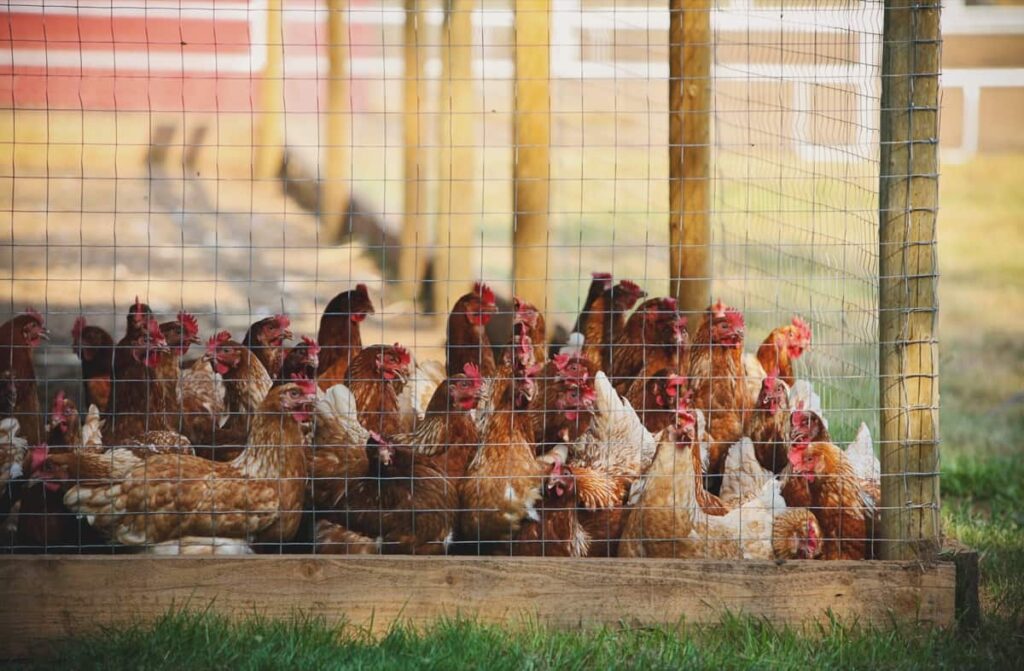
Building a chicken coop, or shed or house
Building a chicken coop is a great method to start raising chickens. Chickens are relatively easy to care for, and they can provide you with fresh eggs. If you have a backyard, you can build a chicken coop to house your chickens. Here are some tips on how to build a chicken coop:
- Choose the right location for your chicken coop. The location should be level and well-drained. It should also be protected from predators and the elements.
- Plan the size of your chicken coop. It should be big enough to house your chickens comfortably but not too big that it’s difficult to clean and maintain.
- Build or purchase a chicken coop made of weather-resistant materials. The roof must be sloped to shed water, and the floor should be covered with sand or straw to absorb manure and keep the chickens warm in winter.
- Equip your chicken coop with nesting boxes, perches, and roosts. Nesting boxes give the chickens a place to lay their eggs, while perches and roosts provide them with a place to sleep and rest.
- Keep your chicken coop clean. Clean out the manure regularly, and replace the bedding material every few months.
Feed management in chicken farming in Indonesia
In chicken farming, feed management is critical to the health and productivity of the flock. Good feed management practices can help farmers produce healthy chickens resistant to disease and convert feed into meat efficiently. There are different factors in designing a feeding program for chickens in Indonesia.
The type of chicken you are raising, the climate, the available resources, and the desired outcome all play an important role in finding the best way to manage your flock’s feed. One of your most important decisions is what feed to use. There are many different types of chicken feed available on the market.
Common types of chicken feed
- Pellets: Pelleted feeds are a balanced mix of all the essential nutrients chickens need, making them easy to provide a complete diet. However, pellets can be expensive, and some chickens may not eat them as willingly as other types of food.
- Crumbles: Crumbles are similar to pellets but smaller and easier for chickens to eat. They are also less expensive than pellets, making them a good option for budget-conscious farmers.
- Mash: Mash is a mixture of whole grains, cracked corn, and other ingredients ground up into a fine consistency.
In case you missed it: Common Poultry/Chicken Diseases, Symptoms, and Treatment: Check How this Guide Helps Poultry Farmers
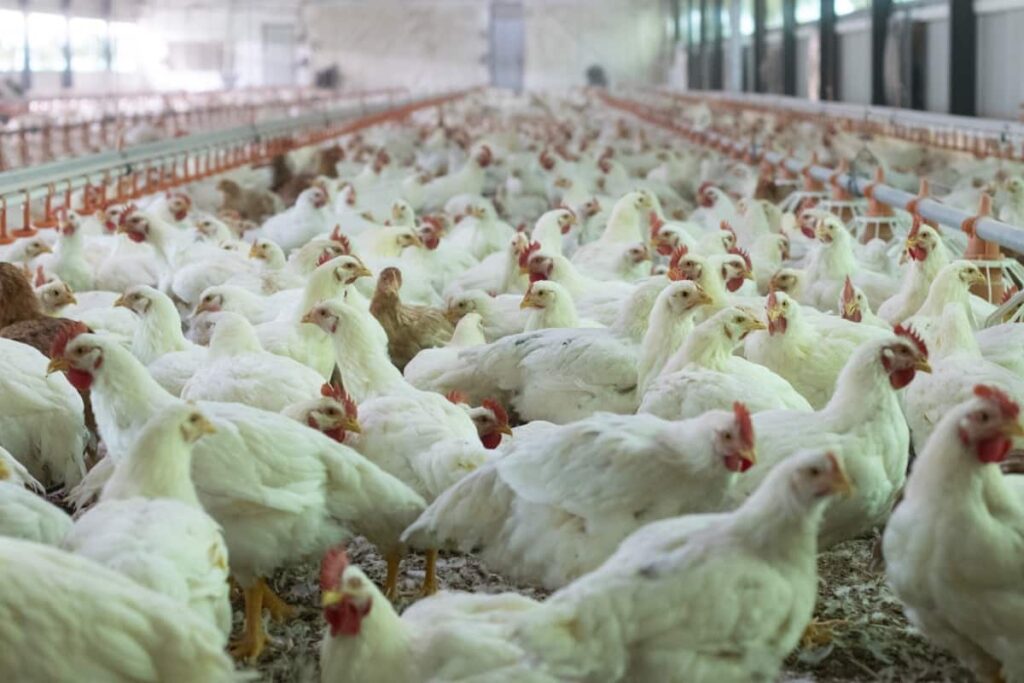
Water management in chicken farming in Indonesia
A chicken farmer must have a good water management system to ensure that the chickens have enough clean water to drink and that the water used for cleaning and cooling is properly disposed of. A good water management system includes a well-designed irrigation system, a storage tank for clean water, and a wastewater treatment system. The irrigation system should provide the chickens with enough water for drinking and cleaning.
The storage tank should be large enough to hold all the clean water the chickens need. The wastewater treatment system should be designed to remove all of the impurities from the water before it is discharged into the environment. Indonesia has a tropical climate, meaning it receives a lot of rain each year. This makes it necessary for chicken farmers to have a good drainage system to prevent flooding.
The drainage system should be designed to collect all the runoff from the chicken coops and direct it away from the farmstead. Chicken farming is an important part of Indonesia’s economy. By taking proper care of their water resources, chicken farmers can help to ensure that they play an important role in the country’s agriculture industry.
Types of chicken farming in Indonesia
- Intensive chicken farming is the most common type of chicken farming in Indonesia. In this type of farming, chickens are kept in small cages or pens and are given little space to move around. This type of farming is often used by big commercial farms that want to maximize their profits.
- Free-range chicken farming is a more traditional way of raising chickens. In this type of farming, chickens are allowed to roam freely in a larger area. This type of farming is more common in rural areas of Indonesia. Free-range chickens usually have a better quality of life than intensively farmed chickens. Chicken farming can be carried out on small-scale, large commercial scale, or even in backyards.
In case you missed it: How to Start Poultry Farming in Cambodia: Business Plan, Investment, Profit, and Management
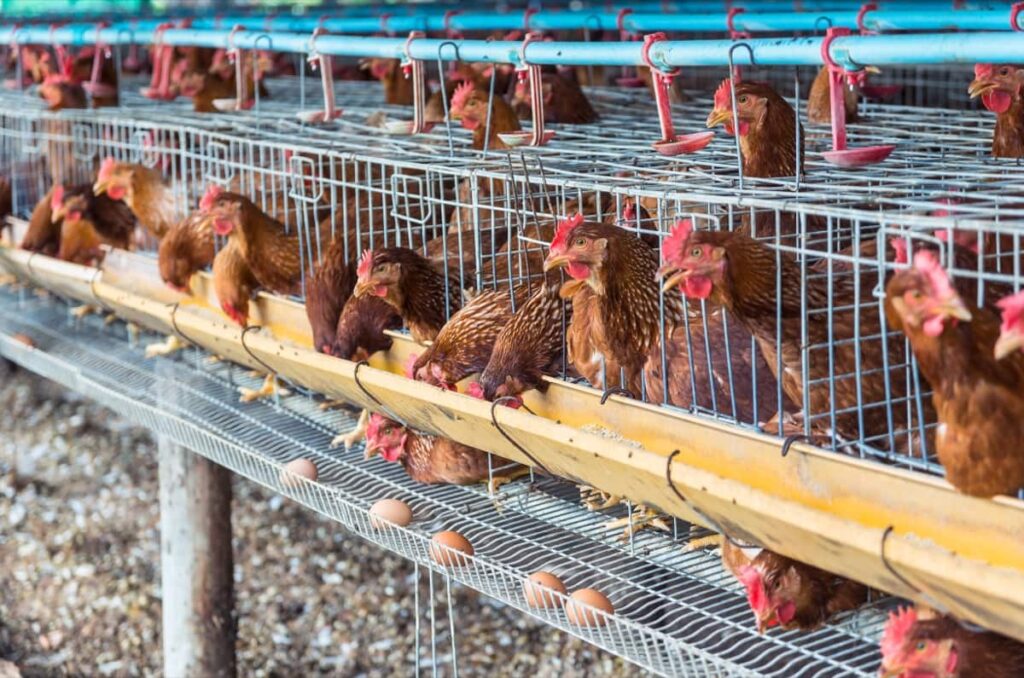
Challenges/problems in chicken farming in Indonesia
Chicken farming in Indonesia is a huge industry, with most chickens raised for meat production. While some small-scale farmers raise chickens for egg production, the vast majority of chicken farms in Indonesia are industrial operations that focus on mass-producing chicken meat. The conditions on these chicken farms are often deplorable, with the birds being crammed into tiny cages and given little to no access to sunlight or fresh air.
The chickens are also typically fed an unhealthy diet of soy and corn, supplemented with antibiotics to help them cope with the unsanitary conditions they are forced to live in. As a result of these conditions, chickens raised on industrial farms in Indonesia typically have a very short lifespan and experience a great deal of suffering during their brief time on earth. However, there are some simple steps that consumers can take to help ensure that the chickens they eat have been raised in more humane conditions.
Disease management in poultry/chicken farming in Indonesia
Disease management is an integral part of chicken farming in Indonesia. Various diseases can affect chickens, and it is important to be aware of these diseases and how to prevent them. The most common disease that affects chickens in Indonesia is Newcastle disease. This disease is caused by a virus and can be deadly.
Chickens can contract Newcastle disease through contact with infected birds or contaminated water or food. Symptoms of Newcastle disease include lethargy, decreased appetite, respiratory distress, and diarrhea. To prevent Newcastle disease, it is important to vaccinate your chickens against the virus. It is also important to keep your chicken coop clean and free of debris and to avoid contact between your chickens and wild birds. Another common disease that affects chickens in Indonesia is infectious bronchitis.
This disease is caused by a virus and causes respiratory illness in chickens. Symptoms of infectious bronchitis include coughing, sneezing, and wheezing. Infectious bronchitis can be deadly, so it is important to vaccinate your chickens against the virus. In addition, you should keep your chicken coop clean and debris-free and avoid contact between your chickens and wild birds. Again, keep your chicken coop clean and debris-free; washing these coops regularly is very important.
In case you missed it: How to Maximize Profit in Greenhouse Farming: Take an Advantage of Future Farming
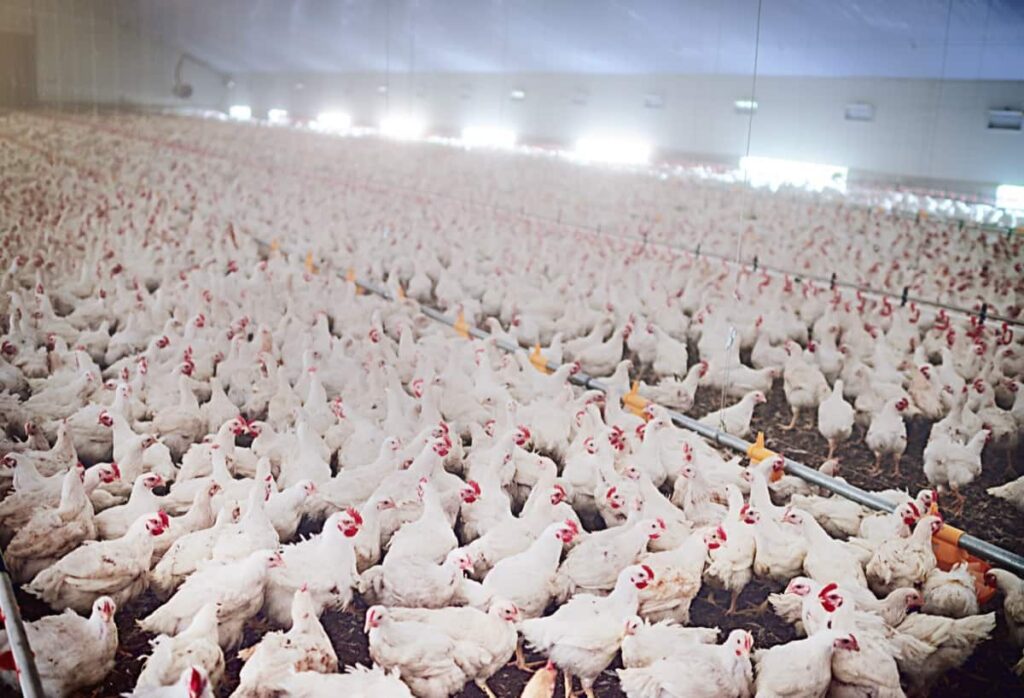
Profit in chicken farming in Indonesia
The profitability of chicken farming in Indonesia depends on different factors, including the size of the farm, the type of chickens being raised, and the efficiency of production. Small-scale farms may struggle to profit due to high costs and low output. However, larger farms with more efficient production systems can be quite profitable.
In addition, the type of chickens raised on a farm also affects profitability. Some chicken breeds are more expensive to purchase and raise than others. However, these higher-priced chicken breeds often have better meat quality and yield higher outputs. As such, they can command higher prices from buyers, resulting in greater profits for farmers. Finally, the efficiency of poultry production plays a role in profitability.
Farms that use modern production and management methods are more profitable. This is because they can produce chicken meat more cheaply and efficiently. In addition, well-managed farms are less likely to experience problems with disease or other health issues, which can lead to significant financial losses.
How to market chickens in Indonesia
The Indonesian chicken market is growing rapidly, with the demand for chicken meat and eggs increasing steadily. However, the market is still relatively undeveloped, meaning great growth potential exists. If you are thinking of marketing chickens in Indonesia, here are a few tips to get you started:
1. Do your research before marketing your chickens in Indonesia; it is important to research and understand the market. What are the current trends? What do consumers want? What are the prices like? By understanding the market, you can develop a more effective marketing strategy.
2. Know your target audience; it is also important to know your target audience before marketing your chickens. For example, who do you want to sell your chickens to? What are their needs and wants? Once you know the target audience, you can develop a marketing strategy tailored to them.
3. Develop a marketing strategy; once you have researched and know your target audience, you can start developing a marketing strategy. There are many ways to market chickens in Indonesia, so choosing the right strategies for your business is important. Consider using traditional advertising methods, such as print or television ads, and online methods, such as social media or email marketing.
In case you missed it: The Benefits of Incorporating Organic Practices in Vegetable Cultivation
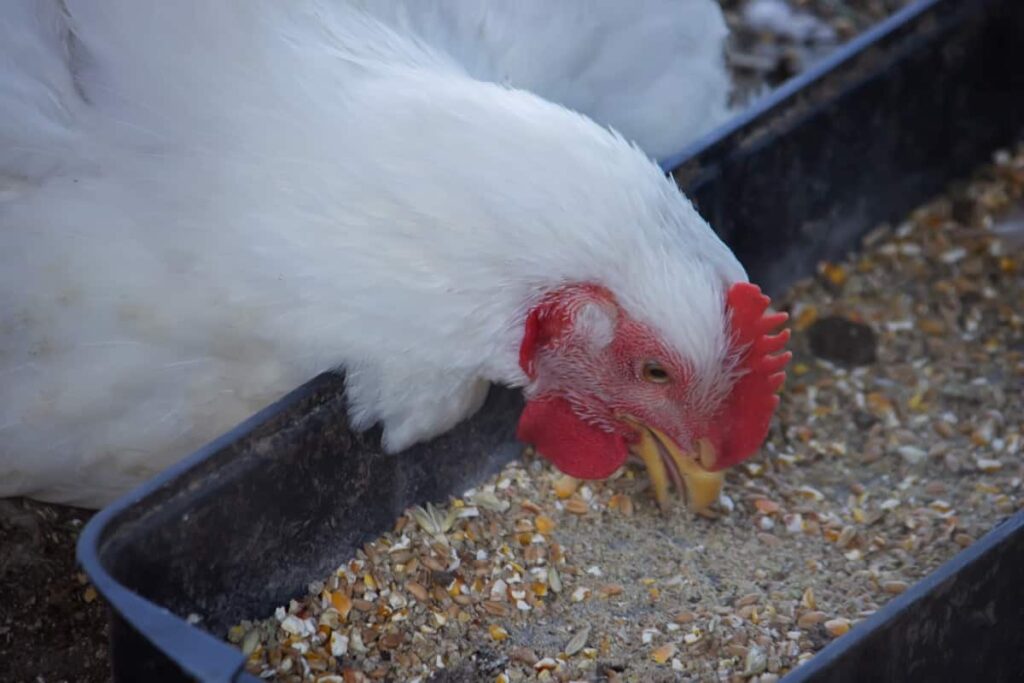
4. The chicken market in Indonesia is constantly changing, so it is important to be prepared to adapt your marketing strategy as needed.
Conclusion
After years of research and development, the chicken farming industry in Indonesia has finally reached a point where it can compete on a global scale. This is thanks in large part to the government’s commitment to supporting the industry, as well as the hard work of the country’s farmers.
Today, chicken farming in Indonesia is a thriving business that employs thousands of people and generates excellent revenue yearly. The future looks bright for the industry, and it is poised to make even more progress in the years to come. So what are you waiting for? Let us start chicken farming today! We wish you a successful journey in the thriving poultry industry.
- Profitable Village Farming Business Ideas in 2024
- High-Yield Aquaculture: Fast-Growing Fish for Farming
- Effective Fish Pond Construction Techniques for Beginners
- Irrigation and Water Management in Pineapple Farming
- Blossom to Harvest: Mastering Flowering and Pollination in Papaya Farming
- Pig Fattening Essentials: From Selection to Sale for Beginners
- Raising Wagyu Cattle: A Complete Guide for Premium Beef Production
- Soil Types and Their Water Holding Capacity
- Optimizing Irrigation Schedules for Coconut Groves for Enhanced Yield
- Espresso Your Garden: Coffee Grounds for Healthier Acid-Loving Plants
- The Best Soil Mix for Snake Plants: How to Mix Your Own Snake Plant Soil
- Green Thumb Success: Expert Tips for Cultivating Greenhouse Beans All Year Round
- Bloom All Year Round: The Ultimate Guide to Indoor Hyacinth Care
- Eco-Friendly Gardening: How to Make Liquid Fertilizer from Kitchen Waste
- Ultimate Guide to Grow Anise in Pots: Explore Seed Propagation to Harvesting
- Guide to Raising Chester White Pigs: Discover Breed Facts to Growth Management
- Mastering the Elegance: The Ultimate Guide to Weeping Cherry Tree Care, Planting, and Maintenance
- Ultimate Guide to Planting Garlic in Grow Bags: Growing Strategies for Beginners
- How to Fix Spider Plant Leaf-Related Problems: Natural and Organic Remedies
- 10 Reasons Why Your Tulsi Plant is Shedding Leaves: Home Remedies and Solutions
- Optimizing Growth and Yield: The Advantages of Palm Bunch Ash Fertilizer
- Utilizing Neem Oil Extract as a Natural Pesticide for Hydrangea
- From Soil to Harvest: Various Ways in Which Farmers Can Use AI Tools
- Steps to Encourage and Induce Citrus Flowers: A Comprehensive Guide
- How to Fix Snake Plant Leaf-Related Issues: Natural and Organic Remedies
- Transform Your Garden into a Fragrant Oasis with Raat Ki Rani (Night Blooming Jasmine)
- Discover the Ideal Chicken Breeds for Philippine Farms
- How to Create a Poultry Egg Farm Business Plan for Profits
- Grow Lemon Cucumbers Like a Pro: Insider Techniques for Bountiful Yields
- Ultimate Guide to Caring for Your Pink Princess Philodendron: Tips for Thriving Variegation
- Areca Nut Profit Per Acre: Calculating Yield and Cost of Cultivation
- How Kaveri Chicken is Becoming a More Profitable Breed in Indian Backyards
- Transform Your Barn: 9 Steps to Convert a Horse Stall into a Chicken Coop
- Exploring Suffolk Sheep Disadvantages with Limitations and Challenges
- Guide to Solving Potted Lemon Tree Problems: How to Revive Lemon Tree in Containers
- Steps to Encourage Female Pumpkin Flowers: Best Strategies for More Flowers and High Yields

I would like to ask is there any company can help me to start chicken farming in Indonesian or Malaysian .